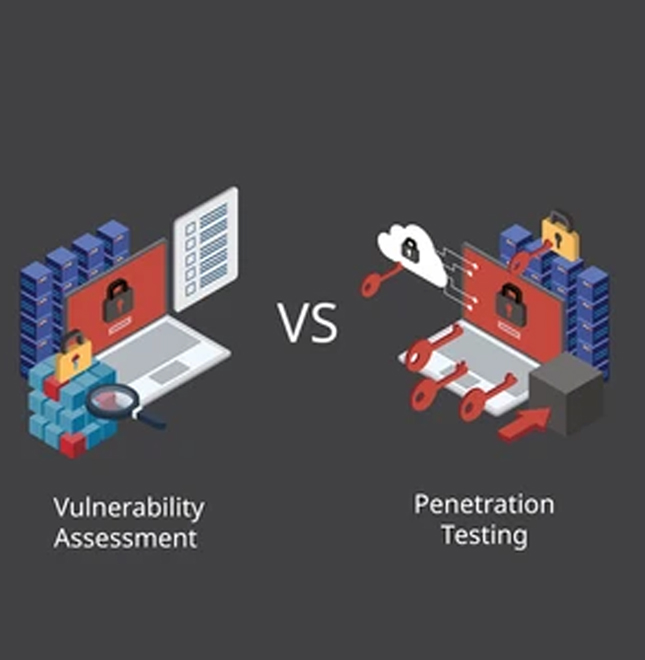
The Evolving Threat Landscape for Healthcare: Why VAPT and Compliance Go Hand-in-Hand
The healthcare industry is undergoing a digital transformation with the adoption of electronic health records (EHRs), telemedicine, connected medical devices, and other healthcare technologies. While this evolution improves patient care and operational efficiency, it also exposes healthcare organizations to an evolving threat landscape of cyberattacks.
Healthcare data is highly valuable on the black market, making healthcare providers prime targets for hackers. Breaches in healthcare not only threaten sensitive patient information but can also disrupt critical services, potentially putting lives at risk. To combat these growing threats, healthcare organizations must adopt a proactive security strategy that combines Vulnerability Assessment and Penetration Testing (VAPT) with strict compliance to industry regulations such as HIPAA and GDPR.
In this blog, we’ll explore the evolving cyber threats facing healthcare, the importance of VAPT in identifying vulnerabilities, and how ensuring compliance with regulations strengthens the security posture of healthcare organizations.
The Unique Cybersecurity Challenges Facing Healthcare
Cybersecurity threats in the healthcare industry are escalating, with both the frequency and sophistication of attacks rising. Here are some of the unique challenges healthcare organizations face:
-
Sensitive and High-Value Data
Healthcare data, including personal identifiers, medical history, and financial details, is incredibly valuable to cybercriminals. Electronic Health Records (EHRs) can fetch a high price on the dark web as they contain a wealth of information that can be used for identity theft, insurance fraud, or selling to unauthorized third parties. This makes healthcare data a prime target for ransomware attacks and data breaches. -
Legacy Systems and Outdated Technology
Many healthcare organizations still rely on outdated systems and legacy devices that are difficult to secure. These systems are often incompatible with modern security measures, making them vulnerable to attacks. Legacy medical equipment and systems may also lack the ability to receive security patches, creating a potential backdoor for cybercriminals. -
Connected Medical Devices
With the rise of the Internet of Medical Things (IoMT), more medical devices are connected to networks for real-time patient monitoring, diagnostics, and treatment. While this enhances healthcare capabilities, it also expands the attack surface. Medical devices can be hacked to disrupt services or even alter patient data, posing significant risks to both the organization and patient safety. -
Compliance Requirements
Healthcare organizations must comply with a range of regulatory standards to protect patient data. In the U.S., HIPAA (Health Insurance Portability and Accountability Act) mandates strict data privacy and security rules for safeguarding health information. In the EU, the GDPR (General Data Protection Regulation) governs the protection of personal data, including healthcare records. Failure to comply with these regulations can lead to significant fines and reputational damage.
Given these challenges, healthcare organizations need to implement a robust security strategy that focuses on both identifying vulnerabilities and ensuring regulatory compliance.
What is VAPT, and Why is it Essential for Healthcare?
Vulnerability Assessment and Penetration Testing (VAPT) is a comprehensive approach to identifying and mitigating security risks within an organization’s infrastructure. In healthcare, where patient data and critical services are at stake, VAPT plays a pivotal role in ensuring systems are secure and resilient against attacks.
- Vulnerability Assessment
- Identify weak spots in legacy systems and medical devices.
- Pinpoint misconfigurations in EHR systems and databases.
- Ensure compliance with HIPAA, GDPR, and other industry standards.
- Prioritize fixes by highlighting critical vulnerabilities that need immediate attention.
- Penetration Testing
- Validates the effectiveness of existing security measures, ensuring that firewalls, encryption, and access controls are functioning as intended.
- Reveals the impact of a potential breach including how far an attacker could penetrate the network.
- Tests the response capabilities of the healthcare organization’s security team in the event of a cyberattack.
A Vulnerability Assessment is the process of identifying weaknesses in healthcare systems, networks, and applications. It involves scanning for outdated software, misconfigurations, weak passwords, and other vulnerabilities that can be exploited by attackers.
For healthcare organizations, a vulnerability assessment helps:
While vulnerability assessments focus on finding weaknesses, Penetration Testing (Pen Testing) goes a step further by actively exploiting those vulnerabilities to simulate real-world attacks. This testing method provides a more in-depth understanding of how a hacker might breach healthcare systems and helps organizations assess their ability to detect and respond to cyberattacks.
Penetration testing is crucial for healthcare because it:
By regularly performing VAPT, healthcare organizations can stay ahead of evolving threats, protect sensitive patient data, and avoid costly breaches.
The Role of Compliance in Healthcare Cybersecurity
In addition to conducting VAPT, healthcare organizations must adhere to strict compliance regulations to safeguard patient data and maintain the trust of their patients. Compliance frameworks such as HIPAA, GDPR, and HITECH set standards for how healthcare providers handle sensitive data and what security measures must be in place.
-
HIPAA Compliance
- Identify and mitigate risks to patient data through regular assessments.
- Ensure the confidentiality, integrity, and availability of health information.
- Train employees on security policies and procedures.
-
GDPR Compliance
- Implement data encryption and anonymization for sensitive health data.
- Ensure patient consent is obtained for the processing of personal health information.
- Report data breaches within 72 hours to regulatory authorities.
In the United States, HIPAA requires healthcare organizations to implement both physical and technical safeguards to protect patient data. This includes encrypting electronic health records (EHRs), controlling access to systems, and conducting regular security audits.
HIPAA compliance also requires that healthcare organizations:
For healthcare organizations operating in the
European Union or handling data from EU
citizens, GDPR is a critical regulatory framework.
GDPR enforces strict data protection measures,
including the right to data privacy and security for
all individuals.
Healthcare organizations must:
Failing to comply with these regulations can result in substantial penalties, as well as loss of patient trust and reputational damage.
How VAPT and Compliance Work Together
Both VAPT and compliance are essential components of a comprehensive healthcare cybersecurity strategy, and they complement each other in significant ways:
- Identifying Gaps in Compliance
- Mitigating Compliance Risks
- Ensuring a Proactive Security Posture
VAPT helps organizations uncover vulnerabilities that could lead to non-compliance with regulations like HIPAA and GDPR. By conducting regular vulnerability assessments and penetration testing, healthcare providers can ensure that their systems meet compliance requirements and address security gaps before they lead to violations.
Through penetration testing, healthcare organizations can simulate real-world attacks to see how a breach could lead to non-compliance. For instance, a successful attack on an unpatched system could result in a HIPAA violation due to exposed patient data. VAPT helps mitigate these risks by identifying and addressing security issues that could lead to non-compliance.
Compliance frameworks like HIPAA and GDPR emphasize regular audits and risk assessments. VAPT goes beyond basic compliance by providing healthcare organizations with a proactive approach to identifying and mitigating threats. This ensures that organizations not only meet regulatory requirements but also maintain a strong security posture that protects sensitive health data from evolving cyber threats.
Best Practices for Combining VAPT and Compliance
To secure healthcare systems and meet compliance requirements, healthcare organizations should adopt the following best practices:
- Conduct Regular VAPT Assessments: Schedule regular vulnerability assessments and penetration tests to stay ahead of emerging threats and identify gaps in compliance.
- Implement Strong Access Controls: Limit access to sensitive healthcare data by enforcing strict access control measures, such as multi-factor authentication (MFA) and role-based access control (RBAC).
- Encrypt Patient Data: Ensure all patient data, both at rest and in transit, is encrypted to meet compliance standards and protect against data breaches.
- Update Legacy Systems: Regularly update and patch legacy systems and medical devices to close security gaps and ensure compliance with regulatory standards.
- Maintain Compliance Documentation: Keep detailed records of all VAPT assessments, security audits, and compliance measures to demonstrate regulatory adherence in case of an audit.
Conclusion
The healthcare industry faces a rapidly evolving threat landscape, with cyberattacks becoming more frequent and sophisticated. Healthcare providers must adopt a proactive cybersecurity strategy that combines Vulnerability Assessment and Penetration Testing (VAPT) with strict adherence to compliance regulations such as HIPAA and GDPR.
By implementing both VAPT and compliance measures, healthcare organizations can protect sensitive patient data, ensure uninterrupted services, and avoid the costly repercussions of a breach. At Risknox, we specialize in providing healthcare organizations with comprehensive VAPT services and compliance solutions tailored to the unique challenges of the industry. Contact us today to learn how we can help you secure your healthcare systems and maintain regulatory compliance in an evolving digital landscape.
Lets Get Stared with Us.
Call Us Now!







